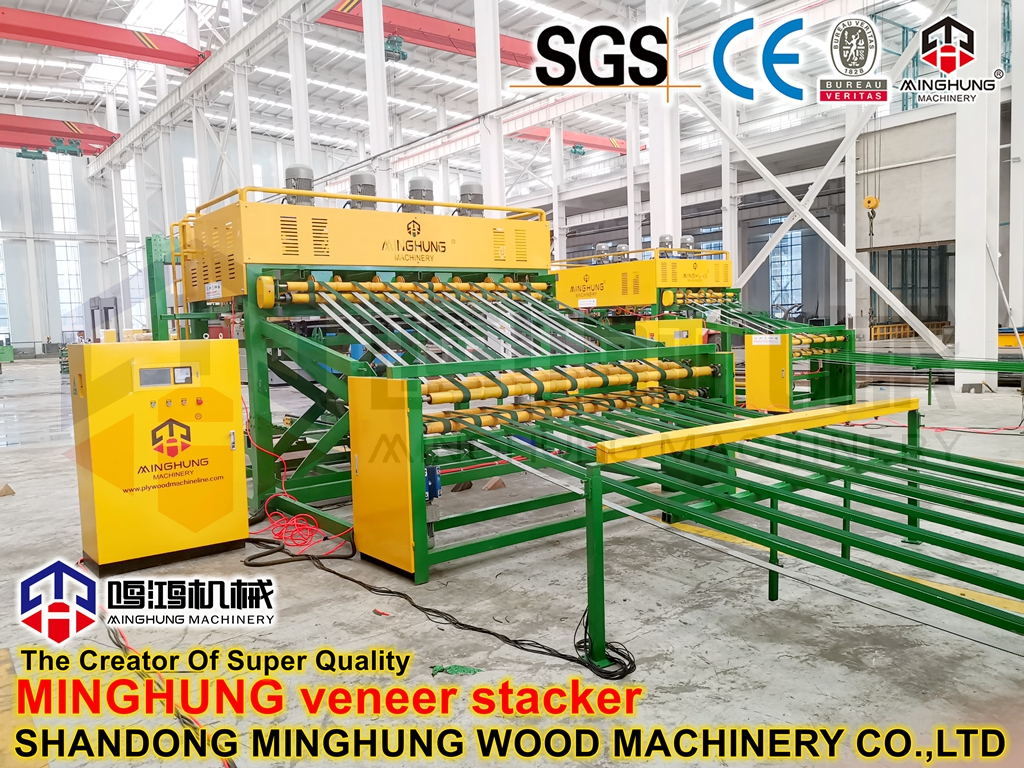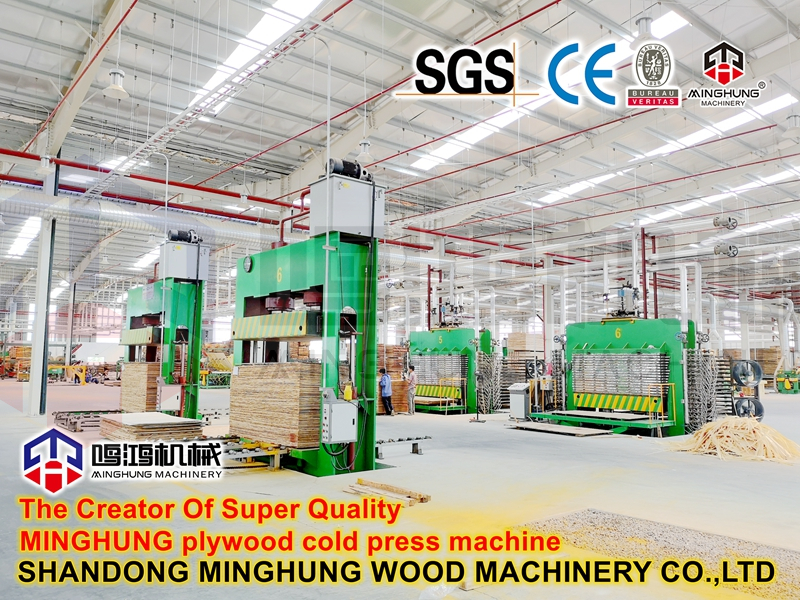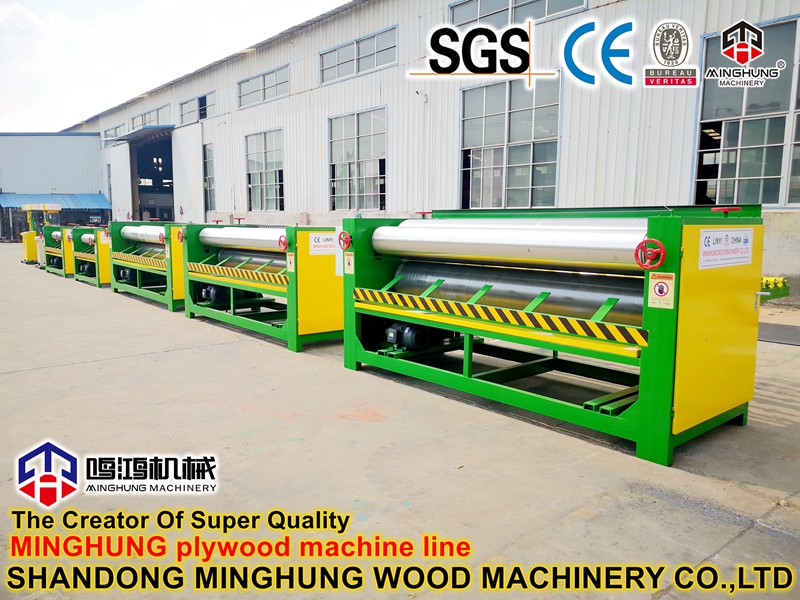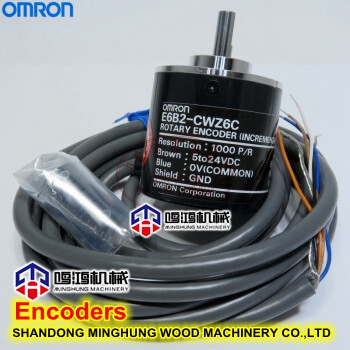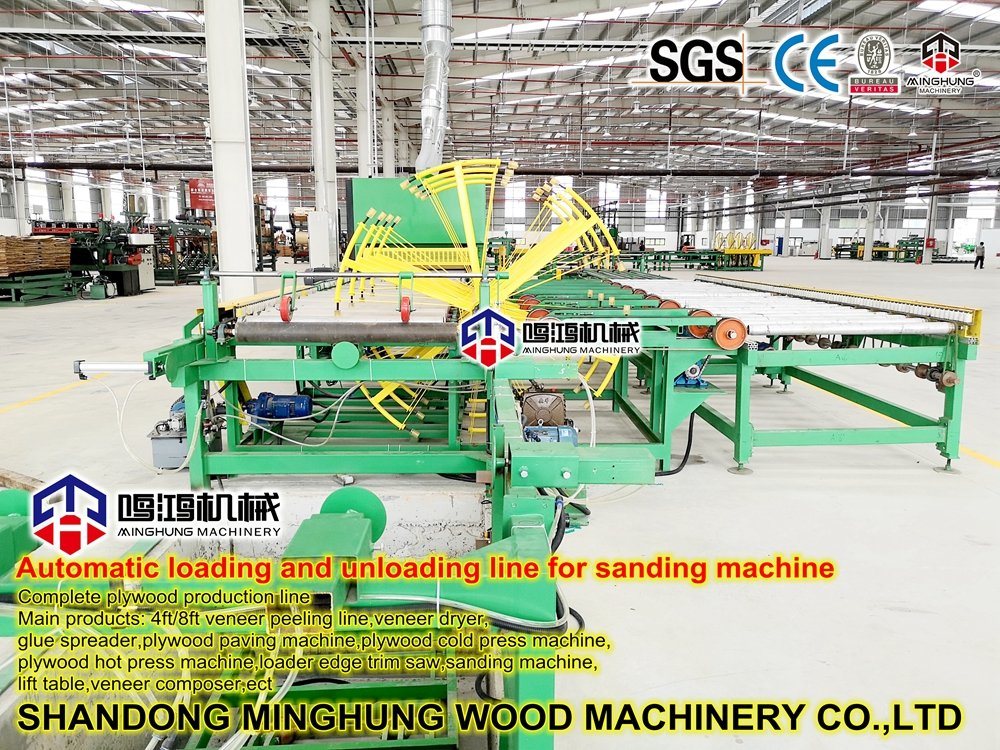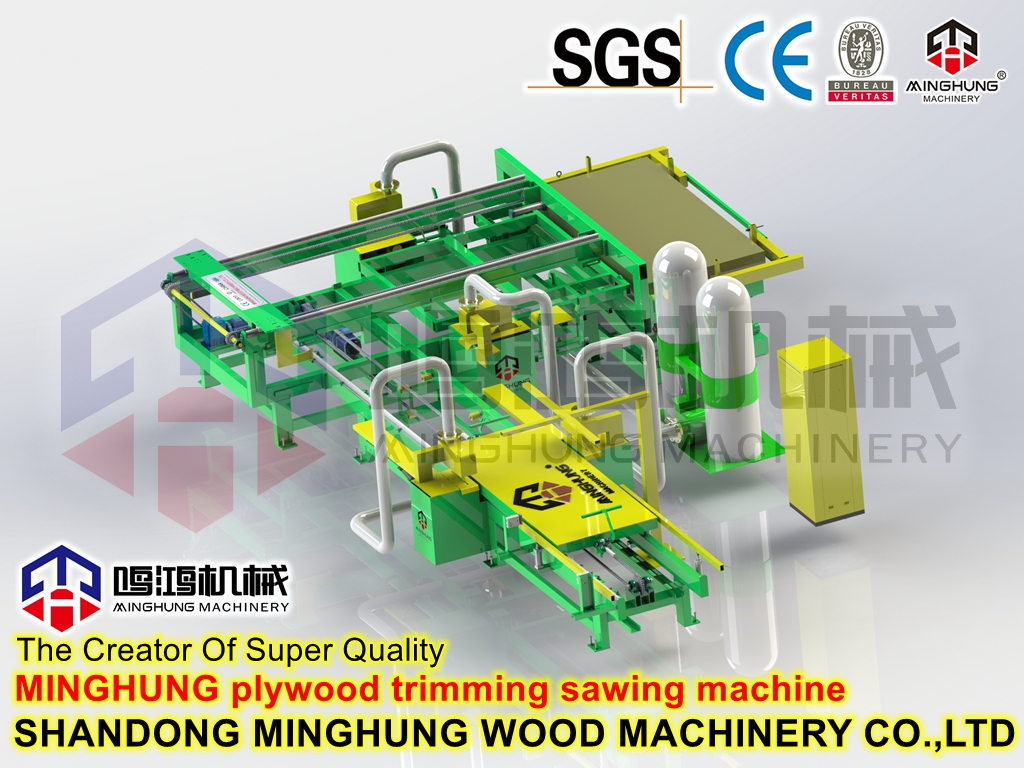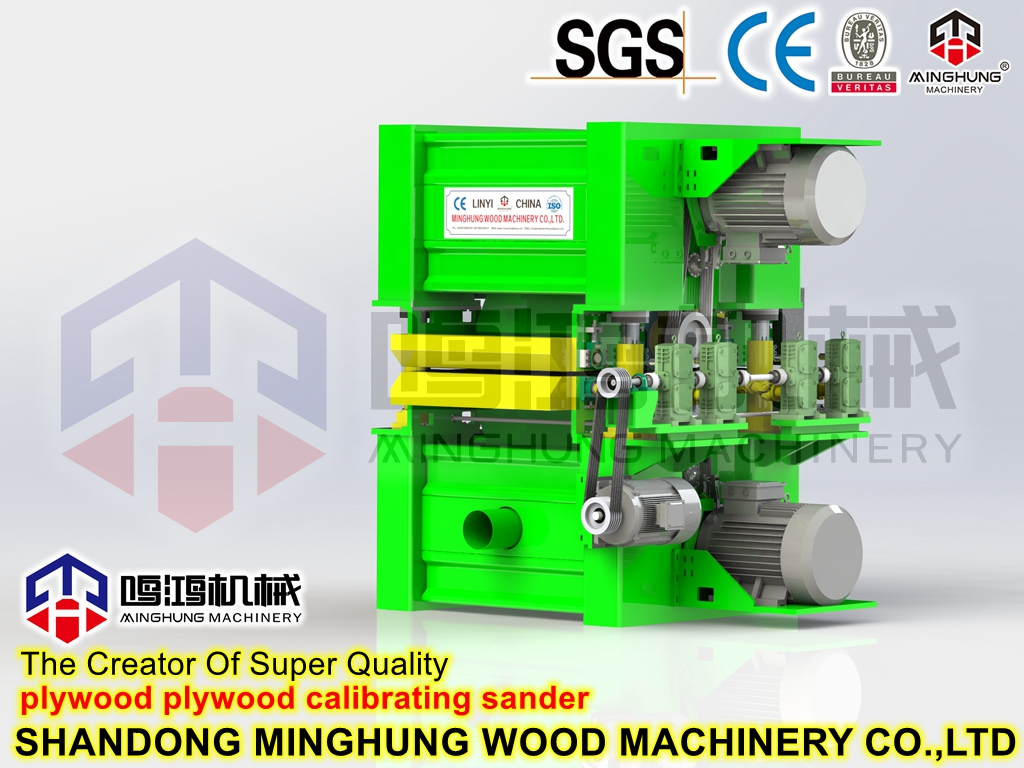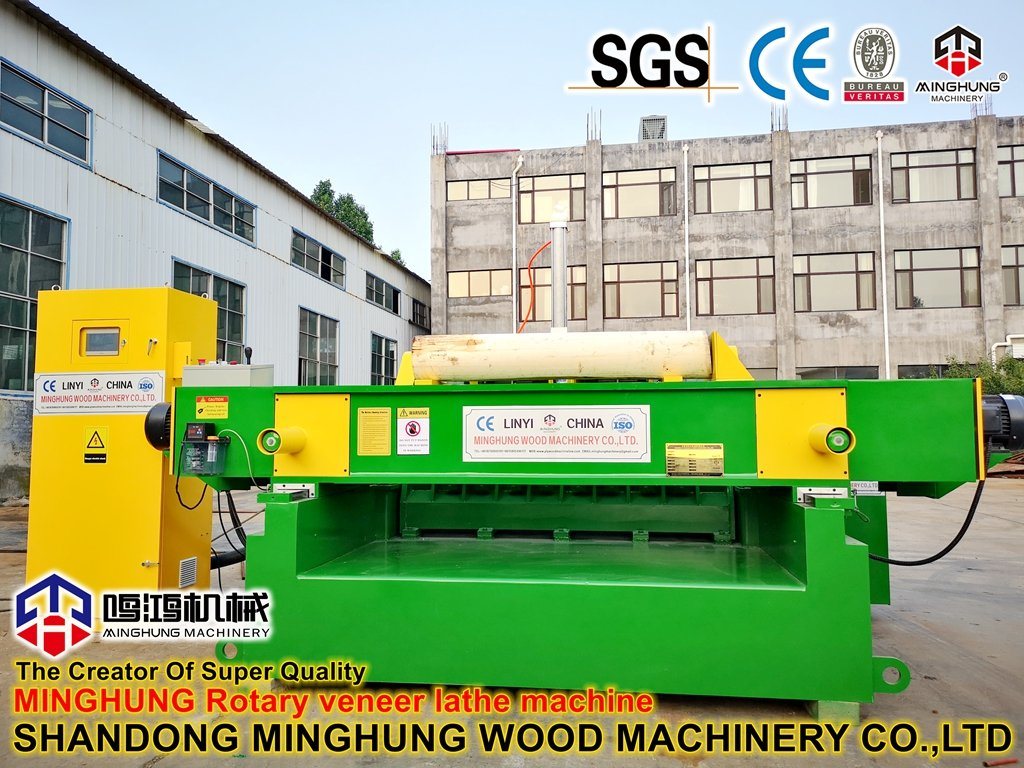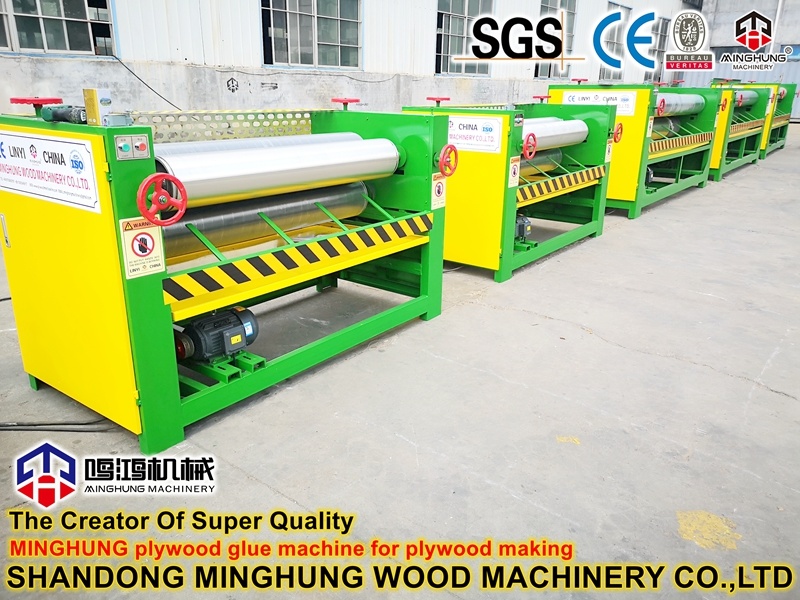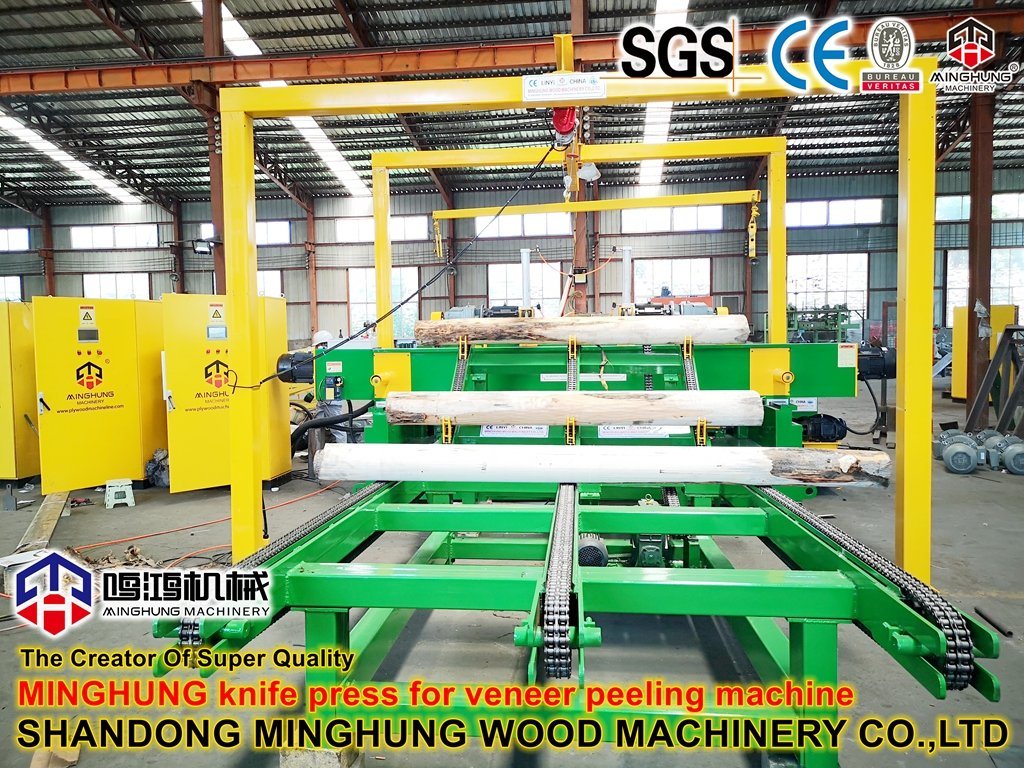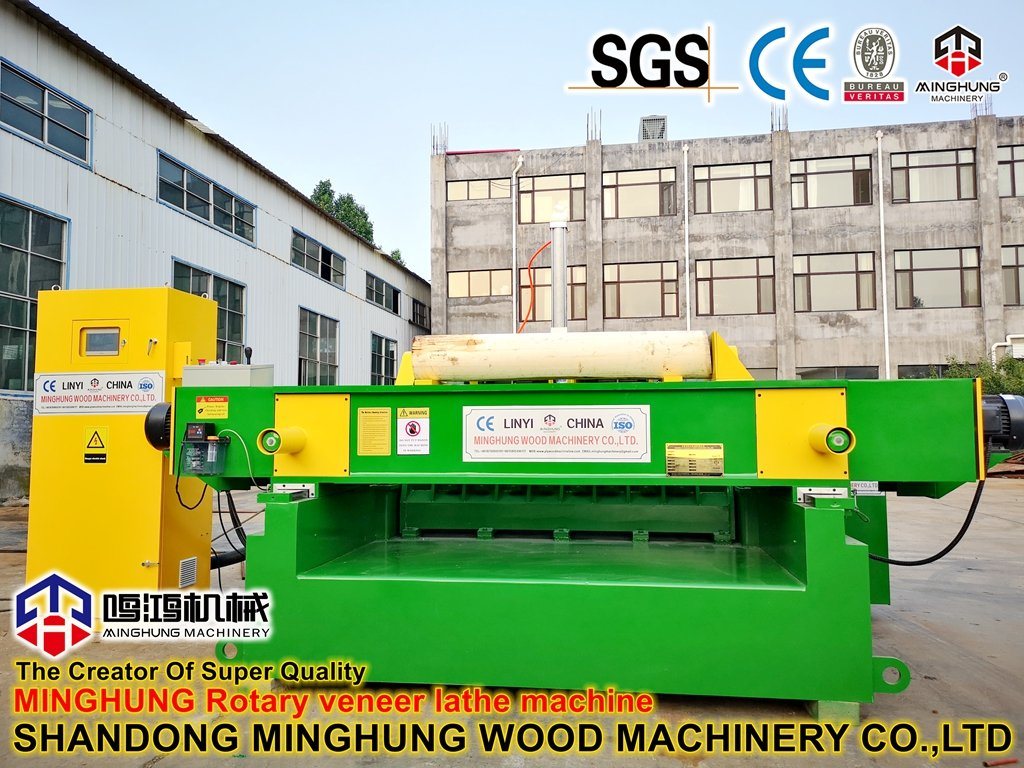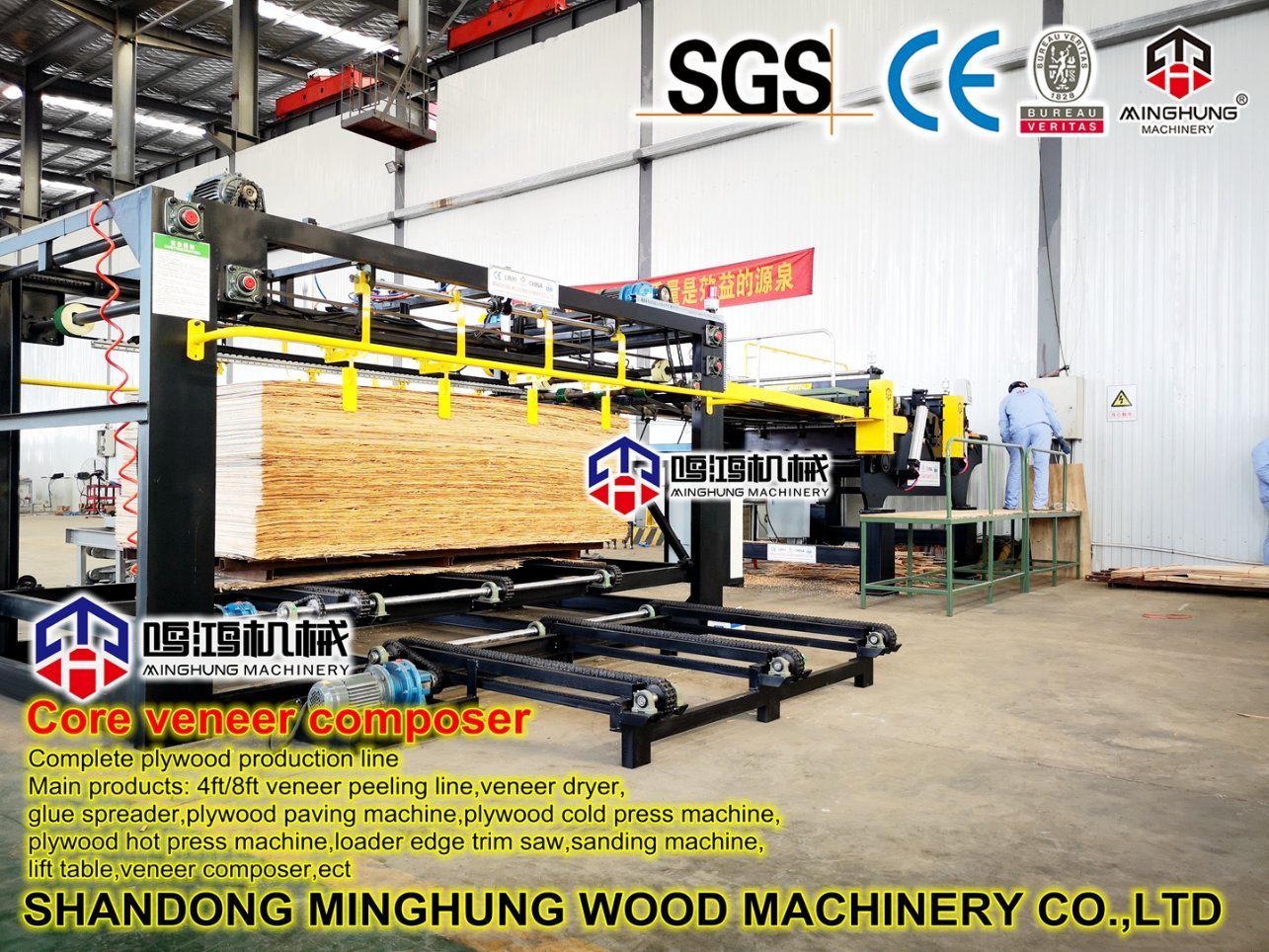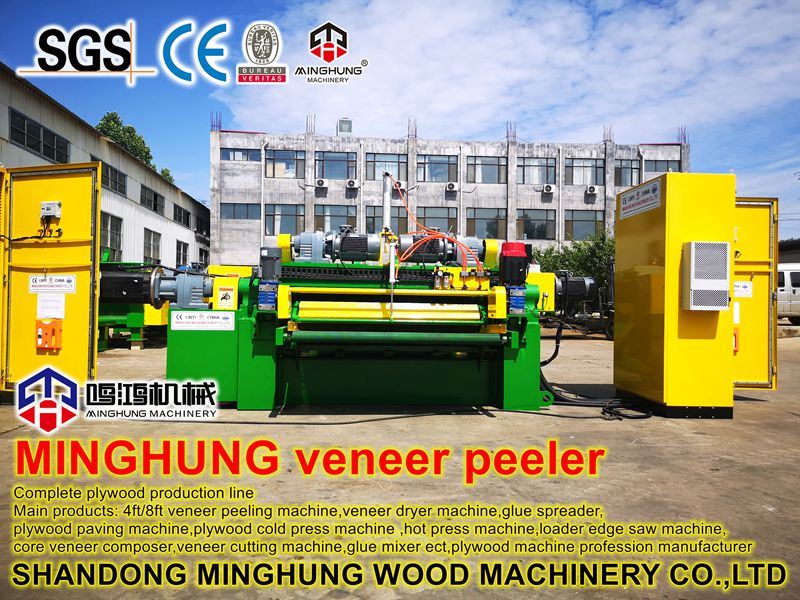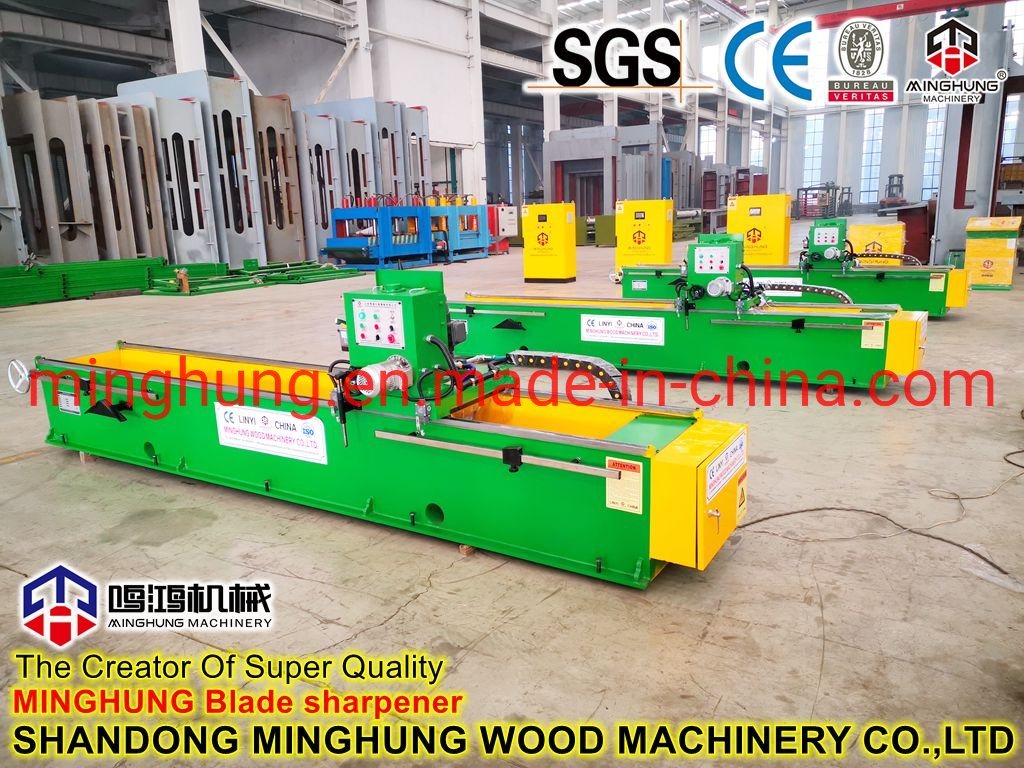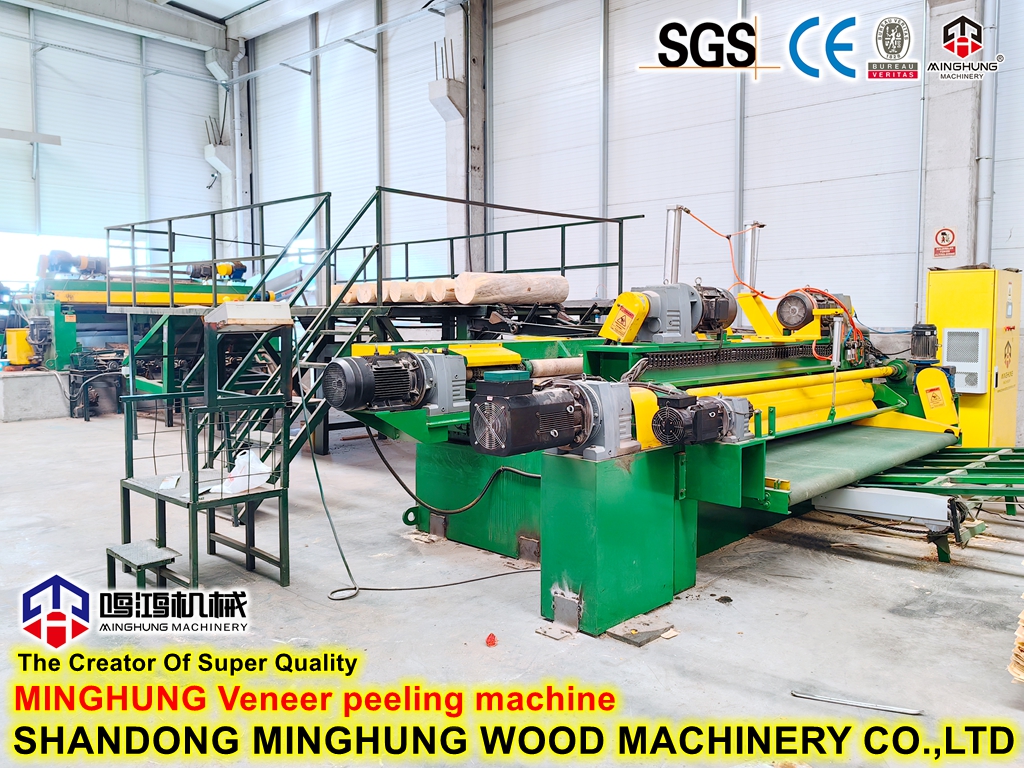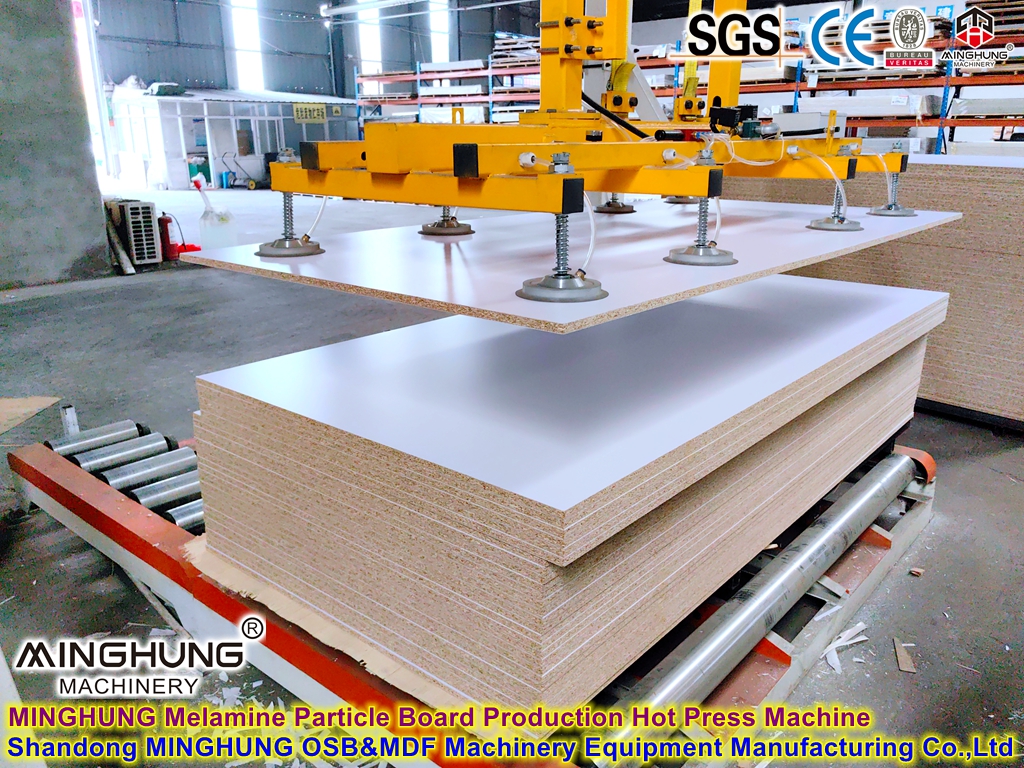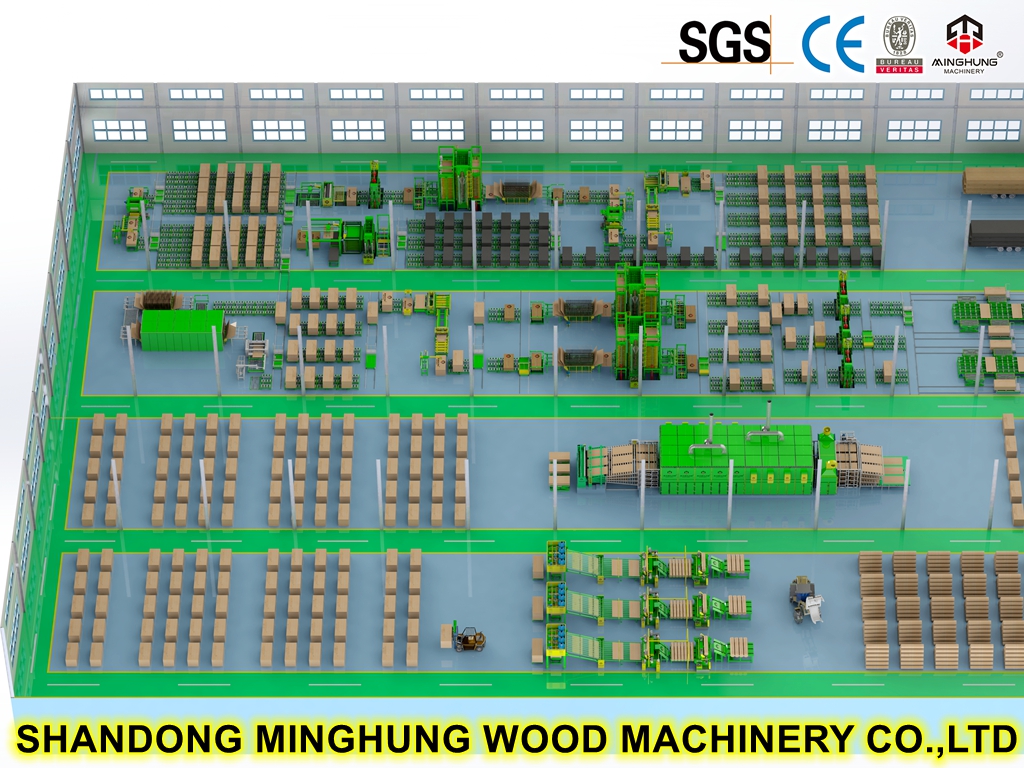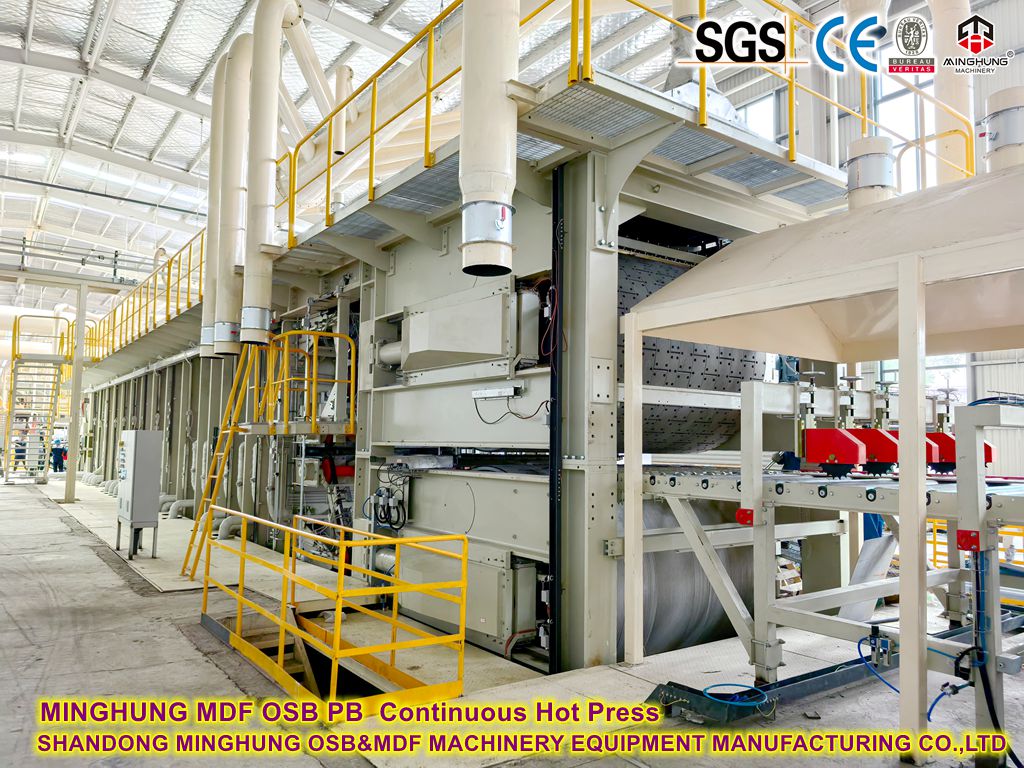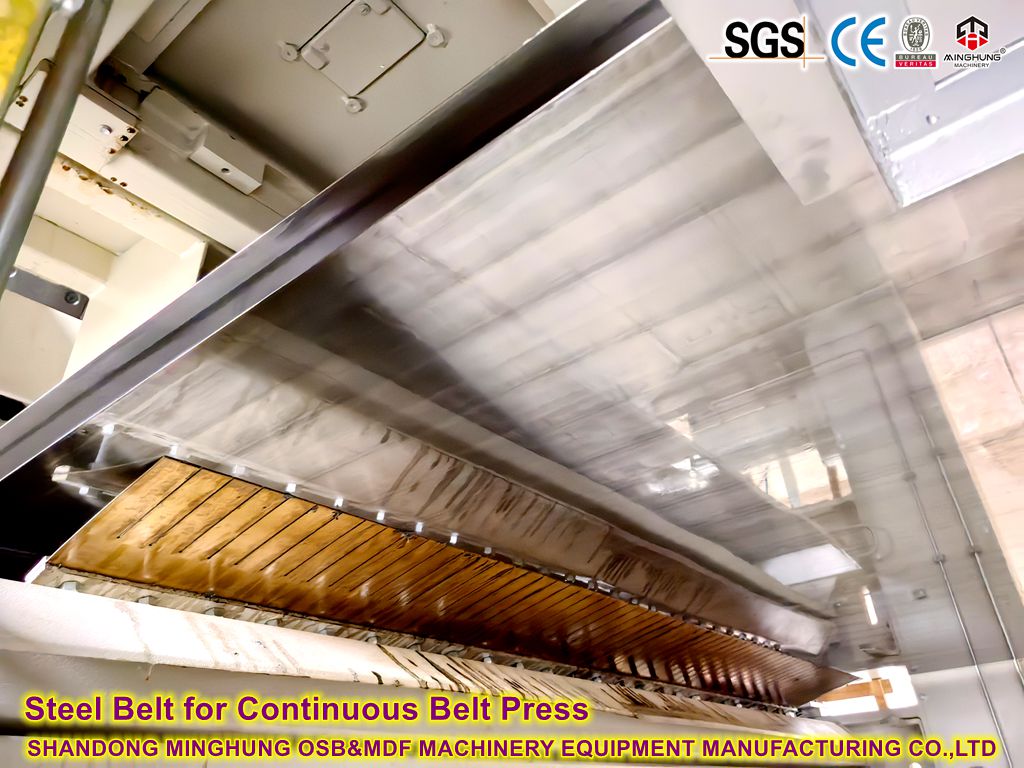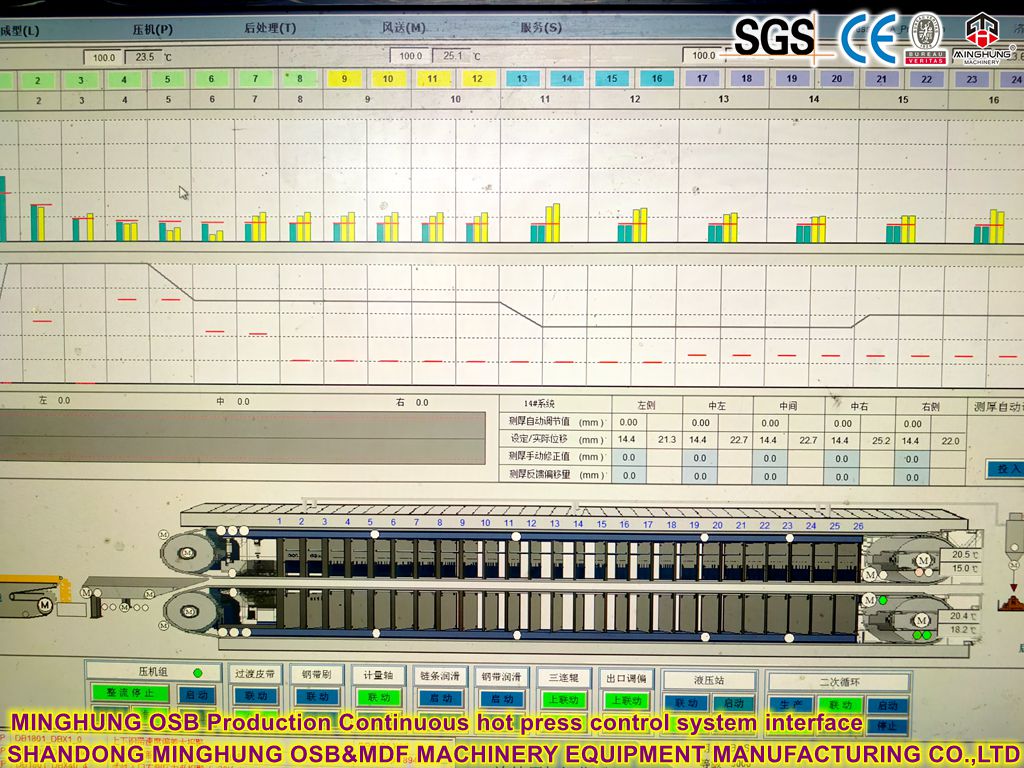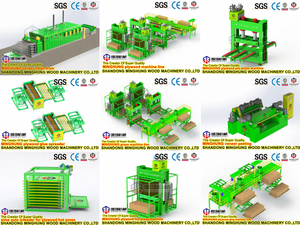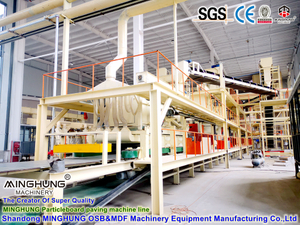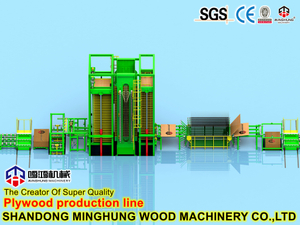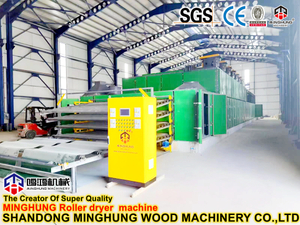Ⅱ. Detailed Explanation of 12-Zone Pressure Regulation
For an 8-foot wide OSB continuous flat press line, a 12-pressure-zone configuration is a common and mature setup, particularly well-suited for producing medium-thickness boards (e.g., common OSB thicknesses from 9.5mm to 28mm). Its core aspects and significance are:
1. Adapting to Curing Stage Requirements:
1.1 Infeed Zones (First few zones): The mat entering the press is fluffy, has high moisture content, low temperature, and inactive resin. These zones require high pressure to:
Rapidly compress the mat close to target thickness.
Expel large volumes of air and steam.
Ensure intimate strand contact for subsequent heat transfer and resin flow.
Establish initial internal bond (IB) strength.
1.2 Middle Zones (Main section): Mat temperature rises, resin melts, flows, and begins curing. Pressure typically needs gradual reduction from high levels to:
Maintain the mat near target thickness.
Ensure sufficient resin flow and cross-linking for IB strength.
Avoid excessive pressure hindering moisture/volatile escape (preventing blisters/delamination).
Achieve more uniform pressure distribution, optimizing the density profile (core density slightly lower than surface).
1.3 Outfeed Zones (Last few zones): Resin curing is largely complete; the board sets. Pressure needs further reduction to:
Allow final curing/setting under controlled pressure, minimizing internal stresses.
Accommodate board "spring-back" (elastic recovery), ensuring stable final thickness.
Prevent "blow-outs" or surface damage upon sudden pressure release.
Reduce friction between steel belts and platens, protecting belts.
2. Pressure Curve Setting & Adjustment:
2.1 Pre-set Curve: Operators or the control system pre-define a pressure setpoint curve across the 12 zones based on target board thickness, density grade, raw material properties (wood species, strand geometry, moisture content), resin type, and curing characteristics. This curve usually starts high at the infeed, smoothly declines through the middle zones, and reaches a lower level at the outfeed.
2.2 Dynamic Adjustment:
Thickness Monitoring: Online thickness gauges (e.g., laser gauges) measure finished board thickness at the press exit.
Feedback Control: Thickness data is fed back to the central control system (typically an advanced PLC or DCS). If deviations from target thickness (e.g., too thick/thin) are detected, the system automatically fine-tunes the pressure setpoints of specific zones (especially middle/outfeed zones).
Feedforward Control: For real-time fluctuations in mat density, moisture, or thickness, the system may predictively adjust pressure in infeed or early zones to stabilize final thickness faster.
Zone Independence: Pressure adjustment in each zone is relatively independent, enabling very fine control. For example, if low density is detected in a specific longitudinal section, the pressure in the corresponding zone(s) can be increased individually. (Control is even finer if the press also has cross-machine direction zoning).
3. Implementation of Pressure Regulation:
3.1 Hydraulic System: Each zone corresponds to one or more hydraulic cylinder groups, precisely controlled by independent servo-proportional valves or high-response proportional valves.
3.2 Pressure Sensors: High-precision pressure sensors in each zone monitor actual pressure.
3.3 Closed-Loop Control: The control system compares each zone's pressure setpoint with its actual pressure feedback. Using control algorithms (e.g., PID), it continuously adjusts the proportional valve opening to precisely control oil flow/pressure to the zone's cylinders, ensuring actual pressure rapidly and accurately tracks the setpoint.
4. Synergy with Temperature Control:
12-zone pressure regulation is always tightly coordinated with zoned temperature control. Temperature curves also have specific profiles (e.g., slightly lower infeed to prevent surface pre-cure, high middle for fast curing, slightly lower outfeed).
Pressure and temperature together determine resin rheology and cure rate. For instance, the right pressure/temperature combination in zones where resin melts is crucial for uniform IB. The system must ensure pressure and temperature setpoints are coordinated spatially and temporally.
5. Cross-Machine Direction Uniformity (Optional):
For wide formats like 8 feet, some advanced presses subdivide each longitudinal zone into several sub-zones across the width (e.g., 3 or 5) to ensure consistent thickness and density crosswise.
These sub-zones have independent pressure measurement and adjustment capability (via zoned cylinders or additional steering cylinders). This compensates for transverse pressure variations caused by uneven forming, belt steering, or platen deflection, significantly improving board quality uniformity across the width.
Ⅲ. Advantages of 12-Zone Configuration (for 8-Foot OSB)
1. Sufficient Control Precision: 12 zones provide enough control points to smoothly define and track the required pressure curve, adapting to the complex physio-chemical changes during OSB curing.
2. Excellent Thickness Control: Combined with exit thickness feedback, achieves very high thickness tolerance control (e.g., ±0.2mm or better).
3. Optimized Density Profile: Fine pressure control helps achieve the ideal density gradient (higher surface density, slightly lower core density), essential for OSB bending strength, internal bond (IB), screw holding, and dimensional stability.
4. Reduced Defects: Precise control of high infeed and low outfeed pressures effectively minimizes delamination, blisters, surface pre-cure, or platen marks.
5. Adaptability: Enables relatively flexible switching between different thicknesses, density grades, and raw material recipes.
6. Production Stability: Dynamic adjustment capability helps quickly respond to process fluctuations (e.g., material changes, forming variations), maintaining stable product quality.
7. Efficiency-Cost Balance: Compared to more zones (e.g., 16, 22), 12 zones offer good control performance with moderate complexity and investment cost, making it the mainstream choice for 8-foot OSB. More zones are typically used for thicker products (e.g., beams) or wider formats (e.g., 10-foot).
Ⅳ. OSB Production Line Width Classification
1. Narrow-Width Lines (< 8 feet)
Typical width: 6–7 feet (1.83–2.13 m)
Positioning:
Early-generation lines or small-scale factories
Suitable for regional markets or low-capacity needs (<150,000 m³/year)
Limitations:
Lower production efficiency, higher energy consumption per unit
Incompatible with standard dimensions for construction substrates (e.g., floor/roof sheathing)
2. Medium-Width Lines (8–9 feet) → Industry Standard ✅
Typical widths:
8 feet (2.44 m): Globally dominant industrial standard
9 feet (2.74 m): Upgraded lines in some facilities
Key advantages:
Perfect alignment with building modules: Enables efficient cutting of standard panels (e.g., 1.22m×2.44m)
Optimized capacity: Annual output typically 250,000–400,000 m³ (with high-speed continuous presses)
Cost-effectiveness: Controllable investment/maintenance costs with mature technology
Applications:
Core configuration for large OSB mills (North America, Europe, China)
Full thickness range production (6–40 mm)
3. Wide-Width Lines (≥10 feet)
Typical widths:
10 feet (3.05 m)
12 feet (3.66 m, rare)
Positioning:
Ultra-large lines representing cutting-edge technology
Annual capacity ≥ 500,000 m³
Challenges:
High equipment costs (steep price increase for presses, steel belts, platens)
Technical complexity (difficult pressure/temperature uniformity control across width)
Limited market adaptability: Requires demand for extra-large panels (e.g., specialty structural boards)
Current status:
<5% global share, mostly custom projects (e.g., select mega-plants in Russia/Canada)
Ⅴ. Why 8-Foot Width is the OSB Industry Gold Standard?
1. Compatibility with construction standards:
Global standard panel size = 4×8 feet (1.22m×2.44m). 8-foot lines achieve 100% material utilization through waste-free direct ripping.
Compatible with Chinese standards (1.22m×2.44m or 1.25m×2.50m).
2. Optimal efficiency-cost balance:
Width | Annual Capacity (×1,000 m³) | Equipment Cost | Energy/Ton Cost |
7 feet | 150–200 | Medium-High | Higher |
8 feet | 250–400 | Optimized | Competitive |
10 feet | 500+ | Very High | Lower |
3. Technical maturity:
Standardized solutions for 8-foot lines:
Proven 12-zone pressure control systems
Established steel belt maintenance & temperature uniformity protocols
8-foot width represents the "gold standard" for OSB production, achieving optimal balance among efficiency, cost, and market requirements.
Claim Your Free OSB Line Layout! Get end-to-end plant design from strand preparation to sanding. Receive 3D factory plan within 30 days.
Our contacts:
Whatsapp: +8618769900191 +8615589105786 +8618954906501
Email: osbmdfmachinery@gmail.com

